Travel photographer Mathieu Dupuis has been collaborating with many Tourism Boards and famous magazines such as National Geographic. He’s always looking for unique lookouts where access can’t be quite challenging. Last year he decided to invest in a brand new 4×4 Mercedes Sprinter Van vehicle and with approximately 20,000$ he built himself the perfect adventure mobile to work from the road. Read his interview here.
How many days each year do you work from your campervan?
This year, I spent about 150 nights in my Mercedes-Benz Sprinter 4×4 van for both work and pleasure. As a professional photographer, there’s a lot of crossover between my personal and professional travels. I use my van year round regardless of the weather. I love winter and cold temperatures. Even in the winter, it’s not uncommon for me to spend an entire week in the van. My wife and I are skiers. We are fulfilling our dream of using our “4-wheels ski condo” to visit every ski resort and spot in the backcountry.
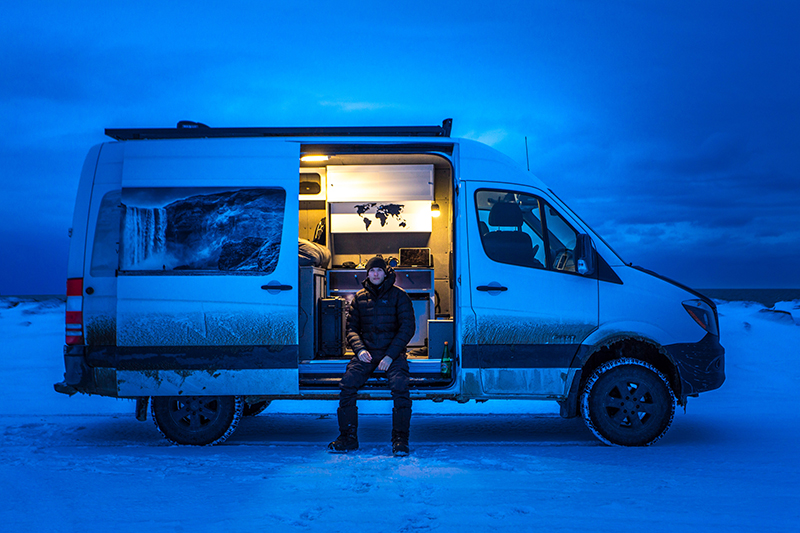
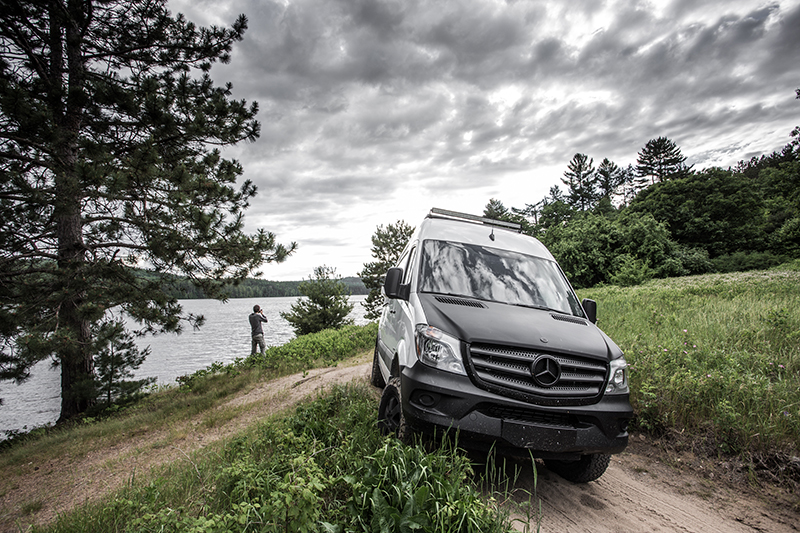
How long did it take you to build out your van and what was the most challenging part?
It is hard to quantify the amount of time I spent on the build. Some of the hardest parts were trying to figure out what would work best through trial and error. It was my first Sprinter DIY conversion and I’m a perfectionist. I wanted to make it look like it just came out of the factory. I am critical of the paint job, especially on the Birch baltic plywood. Because I avoided laminating, I had to explore other options. I did a lot of research and planning, and I read a lot of blogs. But everything I read didn’t fit what I was trying to do. The vans I read about either had too many bells and whistles, were too heavy or not heavy duty enough, and most of them wouldn’t survive in -40 degrees Celsius. I intended to use my adventure vehicle in all those conditions. Also, a lot of them were built for California weather. But I needed something that would work as my “Arctic proof setup.”
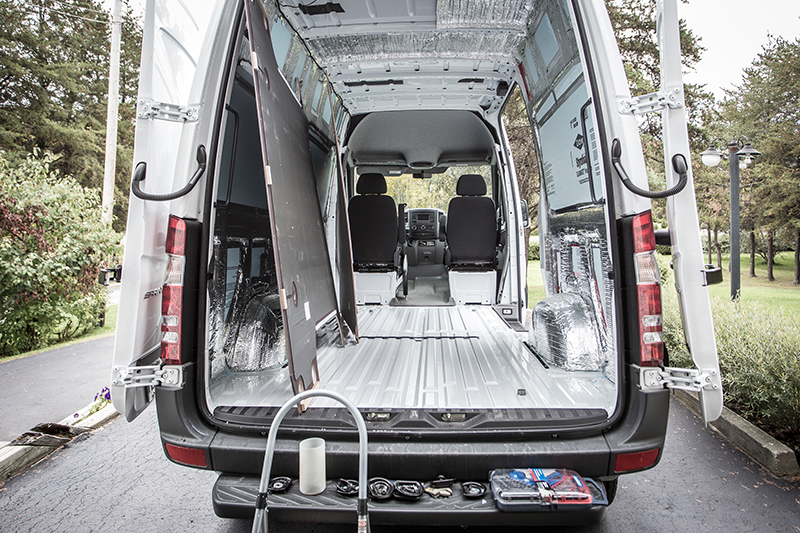
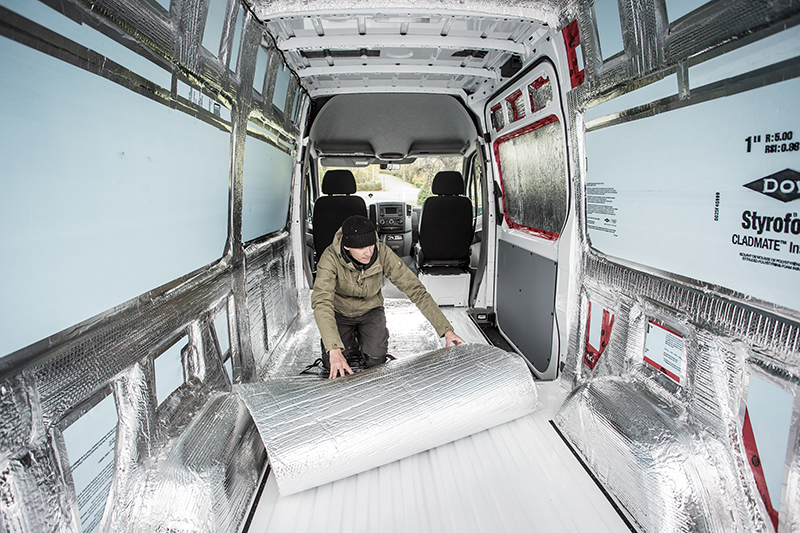
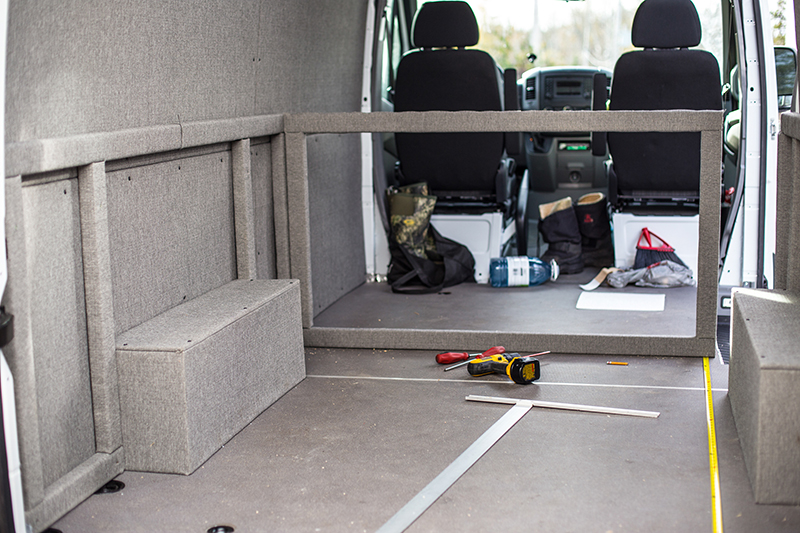
I tried to avoid using products that would be affected by the extreme cold, but also could endure sudden hot temperatures from my Webasto diesel heater. I wanted my interior to be lightweight and resilient, quiet when driving and resistant to cracking, especially during long trips on gravel roads at 115 km/hour. I built the cabinets with birch Baltic Plywood and the sliding doors with Alupanels, and installed a soundproofing system which I built into the frame. I wanted my van to be stealthy, but also have a big cargo area. I sacrificed the living space for cargo underneath the bed to store my photo and outdoor gear. The cargo area is made for a military-grade RIB boat with a 20 HP outboard.
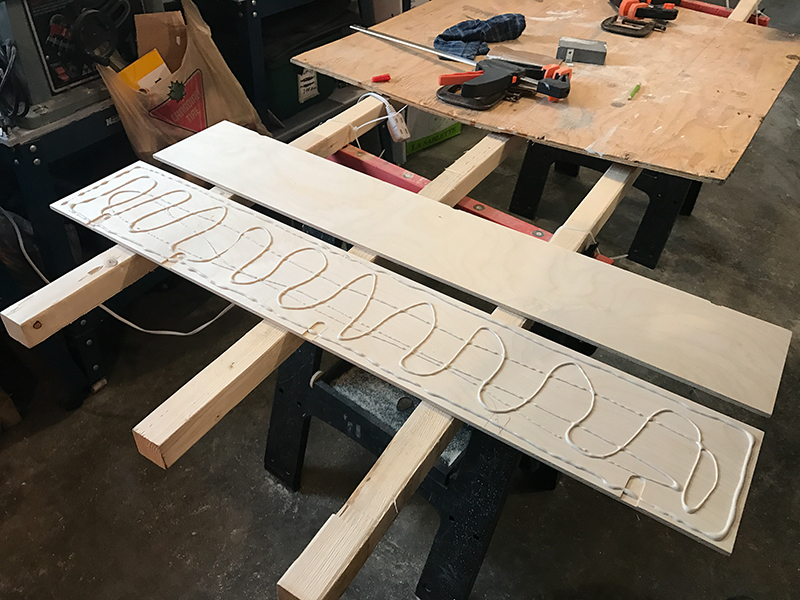
I used a heavy duty fiberglass grid rack with a heavy payload sliding tray, and added a roof rack to act as my photography rooftop platform. I considered a lot of models and concepts before choosing my van. I looked at Unimogs, Steyrs, M1079s, international trucks, the F554 Pro Stage trucks with custom alloy campers, Quigley 4×4 Ford vans—almost everything except a tent. The Sprinter 4×4 van was the only option that met all my requirements. Even after driving 60,000 km this past year, I haven’t found anything that could match this vehicle and also get the job done.
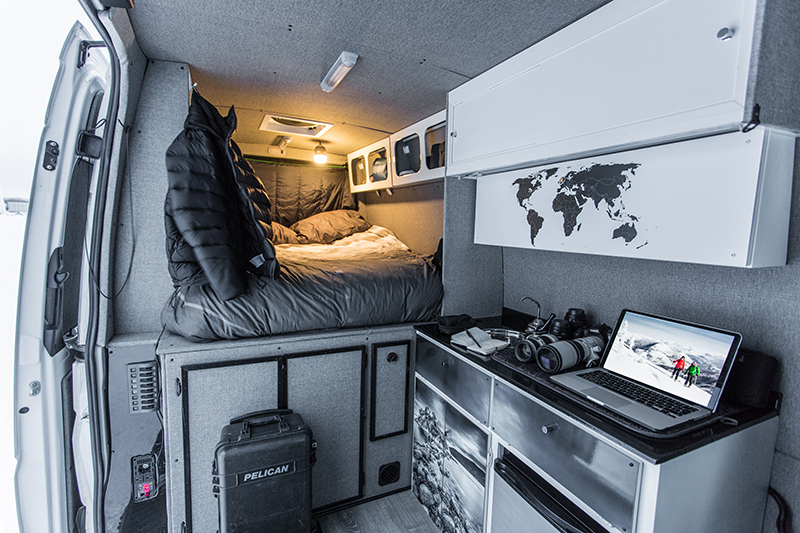
What’s your favorite feature in your van?
My van is not what I would consider a razzle-dazzle. I prefer a rugged and solid finish. I cooled down a bit for my wife because she didn’t want it to look too military. Because I’m in my van in intense climates, I use two auxiliary heating systems. One is an Espar heater that preheats the engine and heats the cabin without the van running. To stay comfortable in my living/working space, I use a Diesel Webasto Airtop 3900 which is good for -45 degrees Celsius.

I have two separate battery banks for security. I use Blue Sea Systems equipment that can run AC and DC. I have around 250Ah of DC current with 1000 watts AC Pure Sine current. All of this is linked to 300 watts of solar panels and I have a built-in charger when I’m able to use a electricity from a house.
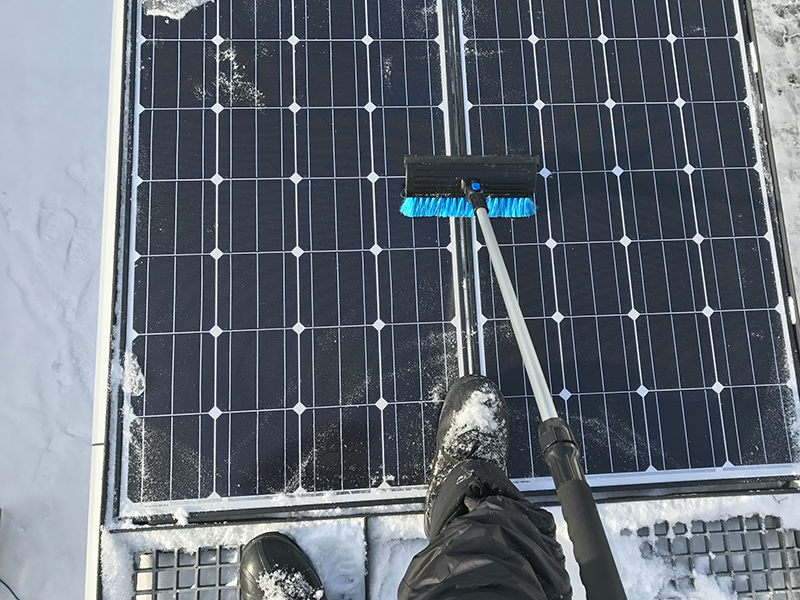
Would you say your vehicle helps grow your career?
Yes, I would say that this vehicle is a new way to live the dream. I’m currently working for National Geographic and doing a lot of field work. I used to spend $10,000 a year in hotels, and sometimes those hotels were far from where I had to work early in the morning. I’m always outside one hour before the sun rises. Now, I can sleep onsite for an early morning photoshoot. I can rest in the middle of the day when the sun is high and eat healthier than I did when I was reliant on fast food options. Life is much easier on the road. But I do spend more time behind the steering wheel. Before my vanlife adventure, I used to travel by plane.
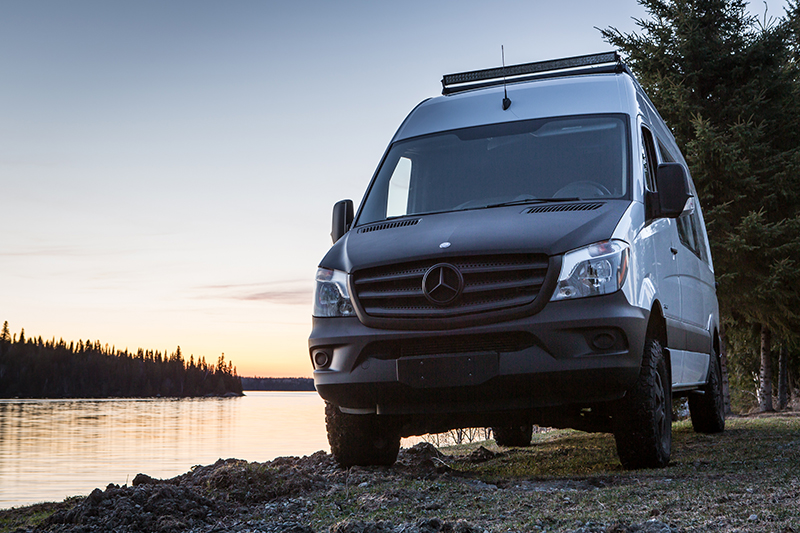
I used to always be in a hurry—trying not to miss flights, checking in at hotels, shooting, resting at hotels for a brief night’s sleep and so on. Now I manage my time differently and it’s much more relaxing. It’s awesome to finish a job in a remote location and be able to hit the road to drive back home. When I am tired, I pull over somewhere to rest and I don’t have to worry about booking an expensive last minute hotel room.

How do you manage to keep your equipment and data safe when you’re on the road?
My van is equipped with 300-watts solar panels setup and 250 Ah AGM deep cycle batteries with the ability to run both AC/DC devices. I use a MacBook Pro with multiple hard drives and backup systems. I added security features to the van to keep my equipment safe. I have a compact and powerful system.
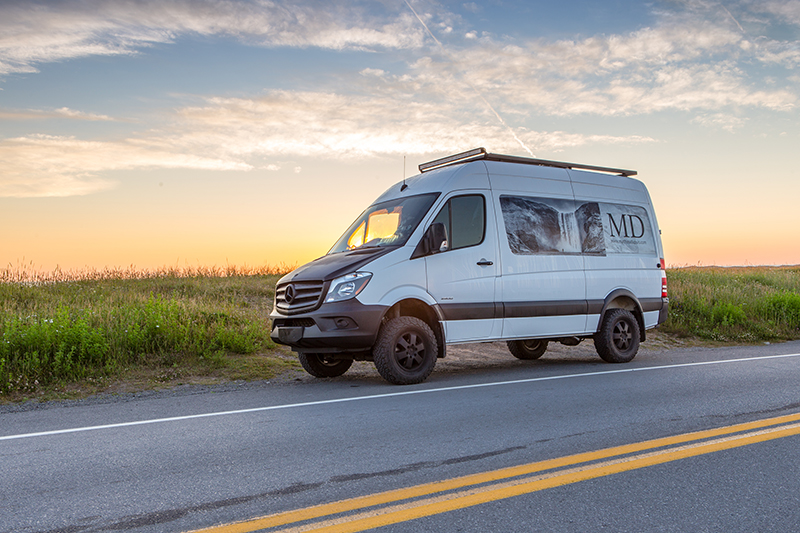
After visiting so many places, what still amazes you?
I’m amazed by almost anything. When it’s the first time I am traveling somewhere, I let the magic happen on its own. When it’s a place I’ve been before, I look back on the great memories I’ve had there and try to see it in a new light.
Magdalen Island

Gaspésie
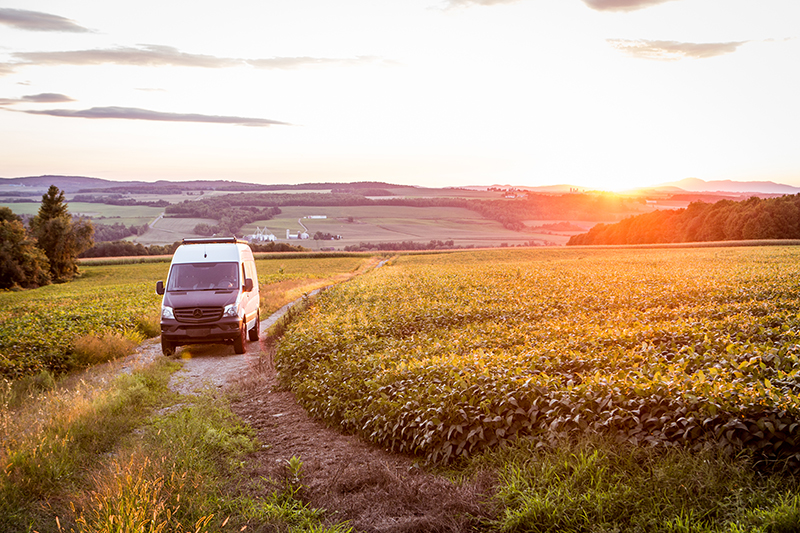
Eeyou Istchee Baie-James
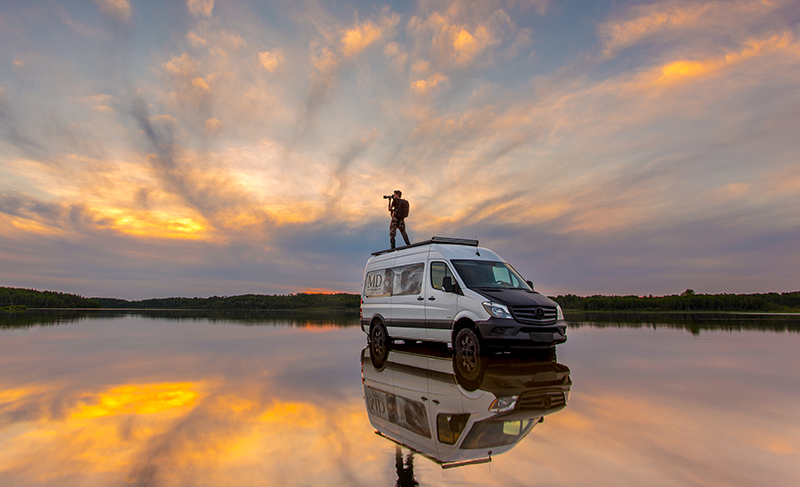
Abitibi-Témiscamingue
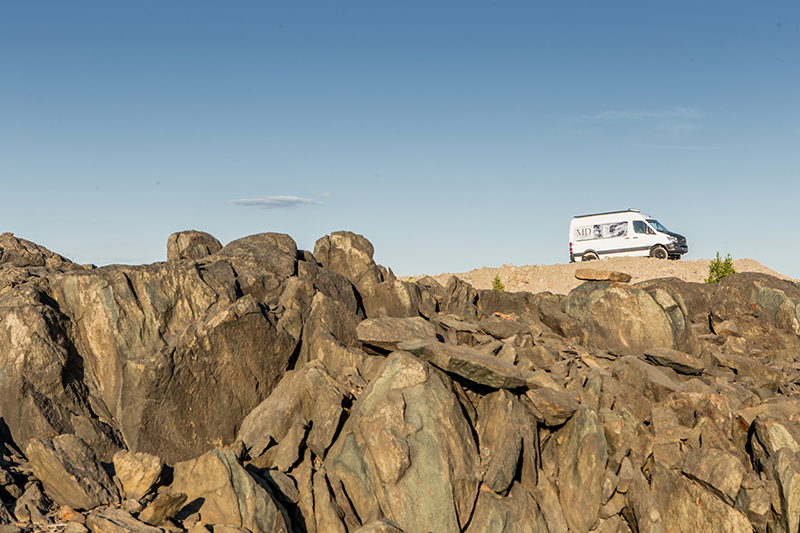
Follow Mathieu Dupuis here:
Website: www.mathieudupuis.com
Instagram: @matdupuisphoto
Facebook: mathieu dupuis photographer


